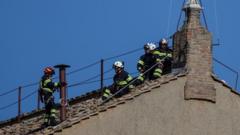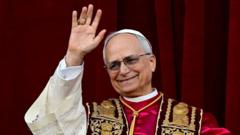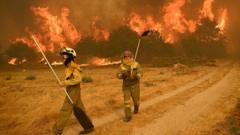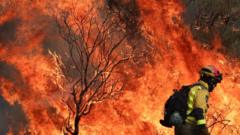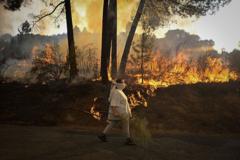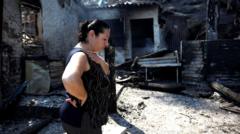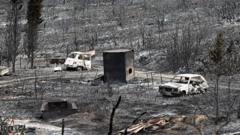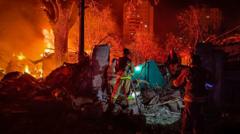When the Catholic Church needs to announce its new pope, the wait is for the sight of smoke billowing from a chimney atop the historic Sistine Chapel. If the smoke is black, it indicates that no pope has been elected, while white smoke reveals a new leader has been chosen with the proclamation of "Habemus Papam." This age-old ritual, watched by millions globally, involves a nuanced system of engineering and precise chemical mixtures, a fact not often recognized by the public.
Following the death of Pope Francis on Easter Monday at the age of 88, preparations for the conclave have begun, with cardinals set to gather at St. Peter’s Basilica on May 7 for a special Mass. The conclave’s voting ritual, which has ancient roots dating back to the 15th century, was established to ensure transparency and prevent procedural tampering that previously led to public discontent.
The Vatican’s choice to communicate via smoke, despite advancements in technology, serves as a bridge to the past. According to Candida Moss, a theology professor from the University of Birmingham, smoke has been a symbolic form of communication with the divine throughout history. The rising smoke signifies a connection not just to the election process but deepens the viewers’ engagement in the mysterious proceedings.
Within the Sistine Chapel, specialized stoves are installed to produce the smoke, with a narrow flue leading to the exterior. Technicians ensure that every part of this system functions flawlessly, as any malfunction could lead to significant embarrassment on a global scale. The engineering required is intricate; it necessitates the careful construction of a chimney that harmonizes with the chapel's iconic structure while ensuring that smoke signals are distinct and visible from below.
Vatican technicians employ carefully composed chemical compounds to generate the requisite smoke colors. Black smoke is achieved with a combination of potassium perchlorate, anthracene, and sulfur while white smoke utilizes potassium chlorate, lactose, and pine rosin. These are meticulously pre-packed and ignited electronically to avoid confusion during the announcement, a departure from earlier, less reliable methods once used.
In addition to the smoking signals, bells ring to confirm the election result, a practice initiated during the papacy of Benedict XVI to mitigate any uncertainty. Proposals for modernizing how the election results are communicated, including colored lights or electronic alerts, have been met with resistance, echoing the Vatican's preference for traditional rituals. Professor Moss emphasizes the theological importance of these customs, illustrating that the Vatican's identity leans away from the notion of modern innovation in favor of preserving its rich traditions.
As the preparations unfold, the engineering and theological implications serve as a reminder of the delicate balance between modernity and tradition in this sacred institution. Close attention to detail ensures that when the moment arrives, the world will be watching for the unmistakable wisp of smoke from the Sistine Chapel, heralding the dawn of a new papacy.
Following the death of Pope Francis on Easter Monday at the age of 88, preparations for the conclave have begun, with cardinals set to gather at St. Peter’s Basilica on May 7 for a special Mass. The conclave’s voting ritual, which has ancient roots dating back to the 15th century, was established to ensure transparency and prevent procedural tampering that previously led to public discontent.
The Vatican’s choice to communicate via smoke, despite advancements in technology, serves as a bridge to the past. According to Candida Moss, a theology professor from the University of Birmingham, smoke has been a symbolic form of communication with the divine throughout history. The rising smoke signifies a connection not just to the election process but deepens the viewers’ engagement in the mysterious proceedings.
Within the Sistine Chapel, specialized stoves are installed to produce the smoke, with a narrow flue leading to the exterior. Technicians ensure that every part of this system functions flawlessly, as any malfunction could lead to significant embarrassment on a global scale. The engineering required is intricate; it necessitates the careful construction of a chimney that harmonizes with the chapel's iconic structure while ensuring that smoke signals are distinct and visible from below.
Vatican technicians employ carefully composed chemical compounds to generate the requisite smoke colors. Black smoke is achieved with a combination of potassium perchlorate, anthracene, and sulfur while white smoke utilizes potassium chlorate, lactose, and pine rosin. These are meticulously pre-packed and ignited electronically to avoid confusion during the announcement, a departure from earlier, less reliable methods once used.
In addition to the smoking signals, bells ring to confirm the election result, a practice initiated during the papacy of Benedict XVI to mitigate any uncertainty. Proposals for modernizing how the election results are communicated, including colored lights or electronic alerts, have been met with resistance, echoing the Vatican's preference for traditional rituals. Professor Moss emphasizes the theological importance of these customs, illustrating that the Vatican's identity leans away from the notion of modern innovation in favor of preserving its rich traditions.
As the preparations unfold, the engineering and theological implications serve as a reminder of the delicate balance between modernity and tradition in this sacred institution. Close attention to detail ensures that when the moment arrives, the world will be watching for the unmistakable wisp of smoke from the Sistine Chapel, heralding the dawn of a new papacy.

